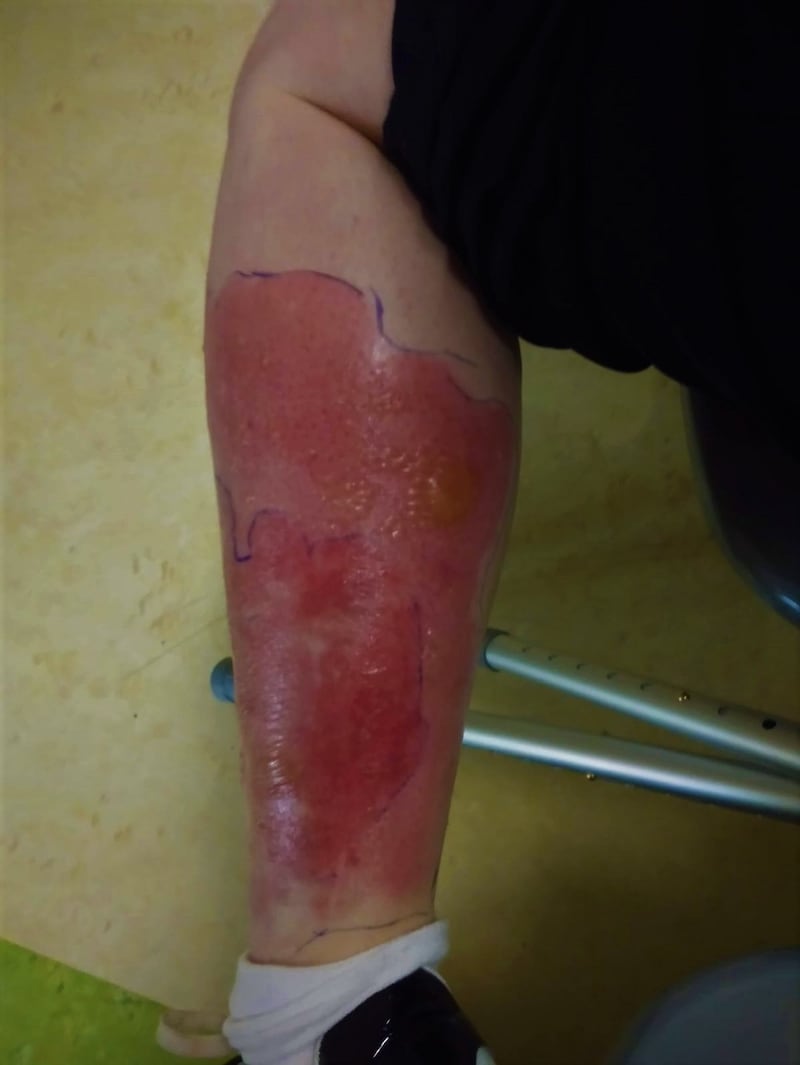Scientists in Ireland have found an alarming rise in Noble False Widow spiders and a new study confirms their bites can require hospital treatment.
The NUI Galway research has found the species to be among the most common in Ireland with bite symptoms that can be quite similar to actual Black Widow spiders.
So far in Ireland 16 people have been hospitalised with one person being admitted for a week.
The worst symptoms of a bite include mild to debilitating pain and mild to intense swelling. Some victims have experienced tremors, reduced or elevated blood pressure, nausea and impaired mobility. In rare instances, minor wounds and even severe bacterial infections have developed.
One victim of a noble false widow spider spent six days in hospital and took three months to recover from a bite, according to the research.
The 43-year-old unnamed woman from Co Waterford is one of a growing number of Irish people who have been bitten by the invasive species which was first spotted in Ireland in 1998 and has been multiplying in number. It is found in most urban areas.
The woman was bitten in her own sitting room. The spider bit her three times on the leg. She compared the pain to having boiling water poured on her skin.
On the sixth day the victim was admitted to the accident and emergency department with cellulitis, a serious bacterial skin infection. She described the pain as 10 out of 10. After six days in hospital she was sent home, but did not recover until the 95th day.

Increasing numbers
This new study, published in the international medical journal Clinical Toxicology, confirms that some bite victims experience symptoms very similar to the true black widow spiders.
Although a density count of the steatoda nobilis species has not yet been undertaken in Ireland, experts have noticed an obvious surge in numbers.
Speaking to The Irish Times ahead of the study's publication in the Clinical Toxicology journal on Thursday, senior author Dr Michel Dugon said that it had been somewhat difficult to find and capture specimens five or six years ago.
“Now we could drop into any housing estate in Dublin and we could pick up easily 100 to 150 specimens within a couple of hours,” he said.
The reasons behind this sudden expansion are not clear. Scientists have ruled out climate change as the likely cause but have suggested that a new genetic mutation within the species may have made them more adaptable to new environments.
In parts of Ireland and Britain, it has become one of the most common species of spiders found in and around urban habitats.
With the increase in false widow spiders around homes, bites are becoming more prevalent, and scientists are now beginning to realise the full medical importance of these spiders.
Lead author of the study Dr John Dunbar, a postdoctoral researcher at the Venom Systems Lab at NUI Galway, said their study “confirms without a doubt that Noble False Widows can cause severe envenomations (the process by which venom is injected).
“This species is increasing its range and population density which will undoubtedly lead to an increase in bites.
“While most cases will have a mild outcome, we need to continue to closely monitor bites by the noble false widow to understand the potential range of symptoms and to treat severe cases when they occur.”
Bitten in bed
One 44-year-old woman from Co Wicklow was sitting on her couch holding her 7-month-old baby when she felt a sharp pain down her leg. When she stood up, she felt the pain spread around her left side. Upon inspection, a spider was found trapped in her clothing. The bite site was located on the hip. The victim began to feel the pain radiating to her neck and jaw line, and down to the ankle. Throughout the day the pain levels increased and was like a constant stinging sensation. The victim took antihistamines. In the subsequent weeks when she felt very tired or run down, the bite area became itchy, and a mark from the bite was still visible.
Another victim, a 38-year-old woman from Co Westmeath, was bitten twice on the lower left forearm while lying in bed. The victim felt sharp stinging pain and after pulling back her pyjama sleeve she found a spider crawling on her arm. Immediately after the bite, the pain intensified. The bite closest to the elbow presented with the more intense symptoms. The next morning the pain, redness and swelling continued and she felt pain and discomfort when trying move her fingers. Due to the persistence of symptoms, a medical examination was carried out by a GP who prescribed a course of steroids, antibiotic cream and antihistamines. By day 16 only mild redness in the affected area remained.















